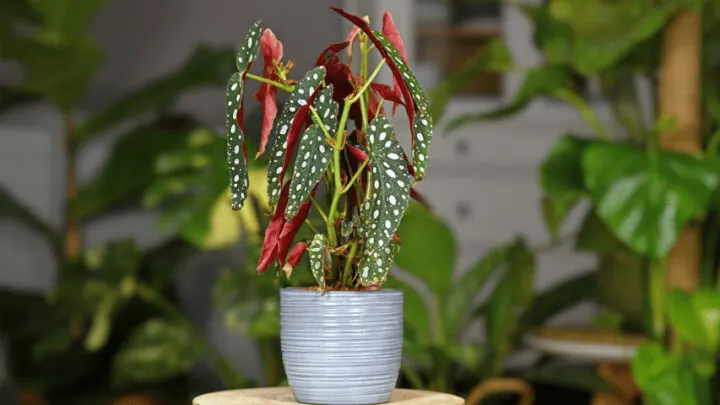Begonia maculata is a plant well known for its prominent and captivating foliage.
It belongs to the begonia family and is extremely toxic if ingested.
It has long upright stems and bears large spotted leaves, sometimes called angel wings.
Generally, Begonia or Begoniaceae is a fairly easy plant family to care for.
It consists of 1800 different species and several hybrids, according to the University of Florida.
It does not require frequent fertilization, which often becomes challenging for many.
How to Revive Begonia Maculata
To revive Begonia maculata, the first step is to accurately diagnose the problem causing your plant to wilt, discolor, or even die. Overwatering and underwatering the plant are common reasons Begonia maculata shows signs of declining health. However, by making sure that a strict watering schedule is built and followed, major recovery of the plant can be made possible.
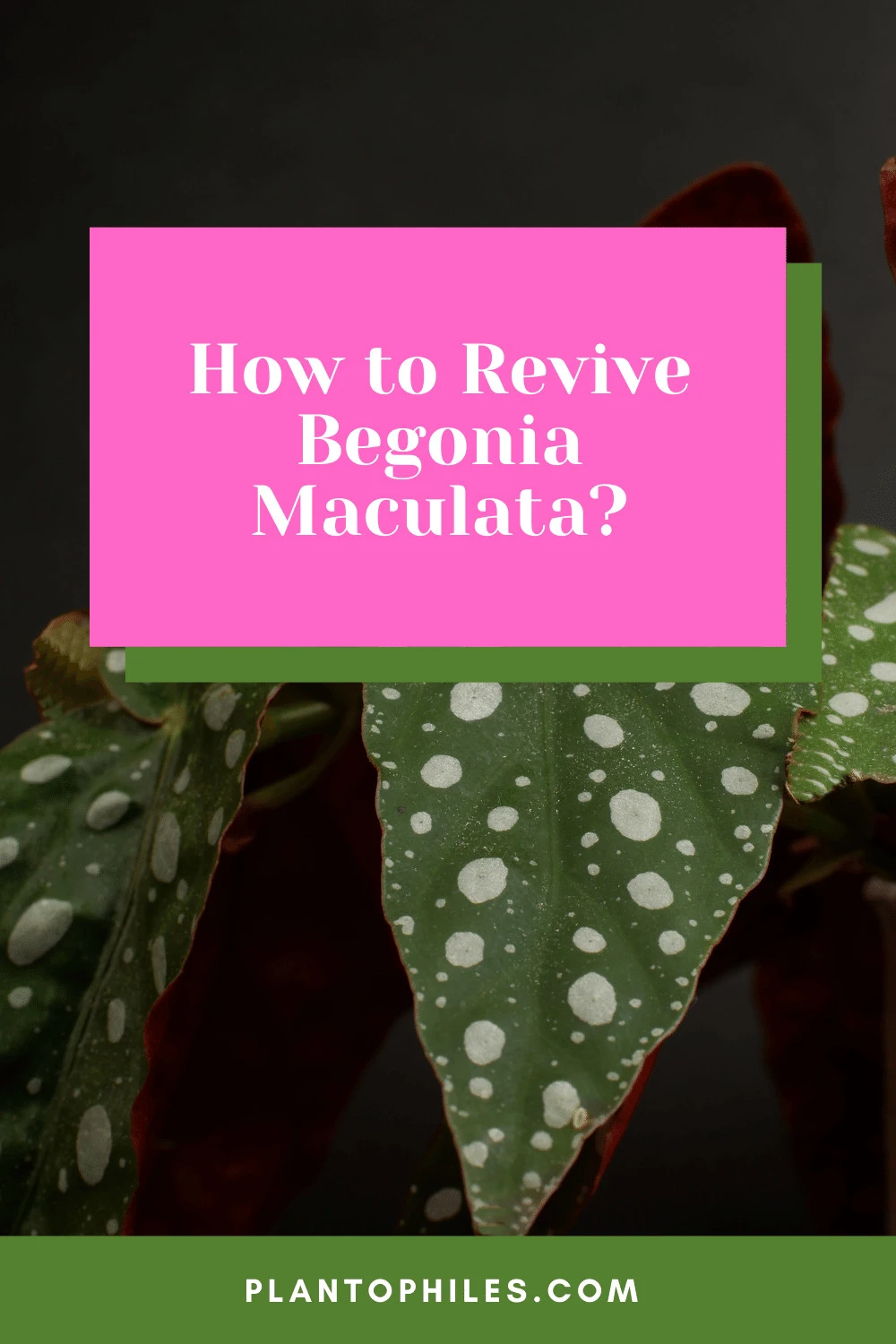
How to Revive Begonia maculata?
Table of Contents
How to Revive Begonia maculata – Causes & Remedies
Begonia maculata can be under stress due to a lot of different reasons.
A proper diagnosis is not only important but also mandatory to increase the likelihood of successful revival of the plant.
Below are some of the reasons your plant maybe not doing well in terms of overall growth and foliage strength.
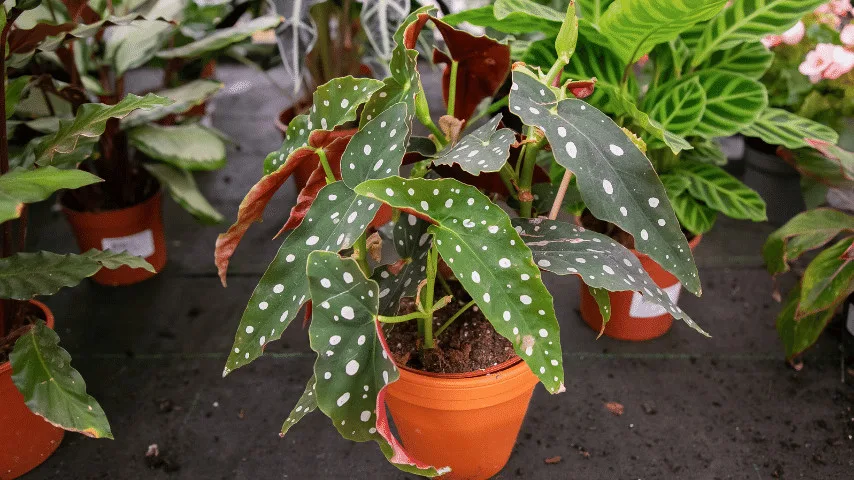
Begonia maculata can be under stress due to a lot of different reasons
Acclimatization
Acclimatization refers to the process through which a plant is transported from one place to another, each having a different climate.
This is probably one of the most neglected causes, as people cannot empathize with a plant’s stress level when adapting to newer locations.
For instance, a plant is brought from the nursery to a person’s garden.
It suffers from great changes in humidity levels, temperature, sunlight exposure, soil quality, and many other factors.
All these variables can be extremely detrimental to the health of the plant.
And therefore, extra care should be given to plants that have just been moved from one location to another.
Usually, a plant takes about a week or so to start showing signs of growth in a new location because, until that time.
It is using all its resources to get accustomed to the changed conditions of its habitat.
This happens especially when a plant is brought from the nursery to a house because the plant nursery environment is extremely different from that of a home.
While enormous plants in the nursery are given all essential nutrients regularly.
The atmosphere in someone’s house can be quite different, with limited plants nearby and an irregular feeding schedule.
Plant Diseases
Plant disease is another common cause of why some plants die suddenly and rapidly.
This is because if a fungus can get hold of a plant’s roots, it will soon affect it, and the plant will die in as little as two days.
Although saving your plant from a disease is tricky, it is still possible.
You may need a little more time to check for any signs of diseases, but you will be relieved that your plant is safe when you do.
To rule out possibilities for plant diseases, you should look out for the following:
- Any brown or black spots on the leaves
- Any unusual holes in the leaves with brown edges
- Check to see if the roots have started to decay after removing the plant from the soil.
- Check for too much or too little moisture in the soil.
These minor checks will help diagnose your plant’s disease, such as bacterial leaf spot, blight, or pythium rot.
Find that any of the above-given symptoms are true. You should immediately remove your plants away from other healthier plants to minimize the chances of disease transmission from one plant to another.
Secondly, if you see any brown spots or holes in the leaves,
try to get rid of those leaves as soon as possible because these infected leaves can infect many others, eventually resulting in the death of the plant.
If your Begonia maculata is suffering from rotten roots due to fungal or bacterial infection, get rid of those specific roots and wash the other roots gently.
After washing them, dip these roots in a high-strength fungicide and plant them back in well-nourished soil.
It can also lead to infections if you have not changed your plant’s soil for a long time, such as two years or so.
Therefore, it is necessary to replenish your soil for the better health of your plants and minimize the chances of infection.
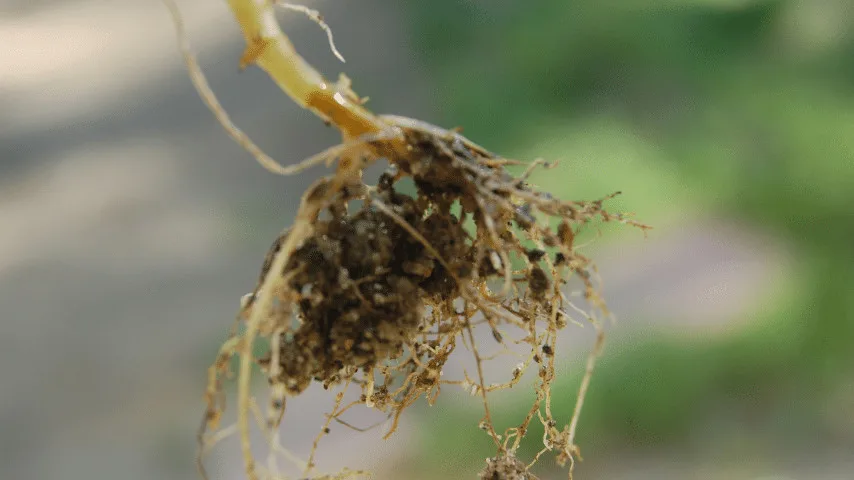
Begonia maculata is suffering from rotten roots due to fungal or bacterial infection
Temperature
Temperature changes can also result in the declining health of your plant.
For instance, if you have put your plant indoors near an air conditioner, it will be enough to put it under temperature stress.
Similarly, if kept outside and the external environment is way too hot for the plant to endure, it can also cause temperature stress,
due to which the leaves of begonia may start to burn or droop.
Begonia maculata loves temperatures between 60 and 75 Fahrenheit (15 to 23 degrees Celsius).
You can make good use of equipment to monitor the temperature of the plant’s soil using a digital thermometer.
And then decide the appropriate location for your plant.

To monitor the temperature of the plant’s soil, use a digital thermometer
Growing Flowers on Your Begonia maculata
Begonia is capable of bearing extraordinary flowers with a bright and striking appearance.
However, it only does so if it has enough nutrients to invest in bearing flowers.
The most common reason for Begonia maculata not bearing flowers in many gardens.
It is because it is not well-nourished to the extent that it has spare resources to spend on flowering.
If you are lucky enough to witness flowers on your Begonia maculata,
ensure that you take good care of them by providing enough nutrients and watering the plant regularly.
Moreover, it is also essential to prune the flowers once they have fully bloomed.
This will increase the likelihood of the plant bearing flowers the next season.
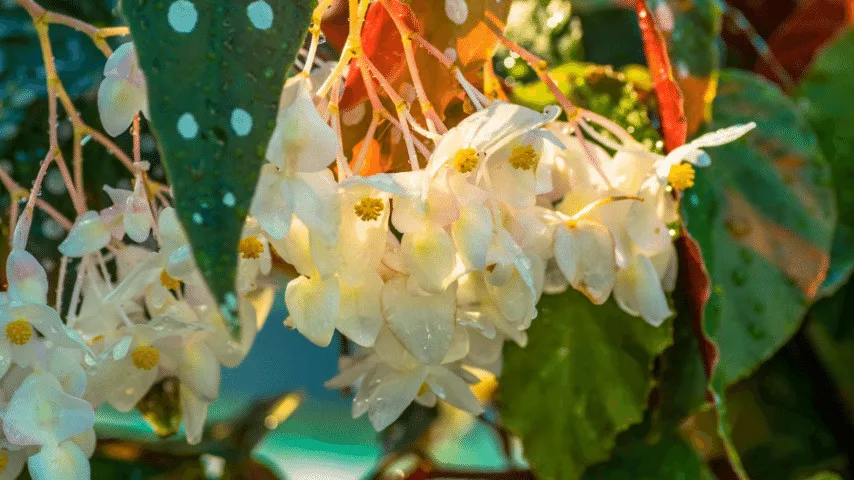
Begonia is capable of bearing extraordinary flowers with a bright and striking appearance
Frequently Asked Questions About How to Revive Begonia Maculata
Is Begonia maculata rare?
Begonia maculata is not a rare plant. In recent years, Begonia maculata has gained a massive audience and has become a popular houseplant. Therefore, the fame has led to the increased availability of Begonia maculata. It is available in many plant nurseries and gardening shops, almost everywhere.
Should I mist my Begonia maculata?
Though inefficient, misting a Begonia maculata is a way to maintain a plant’s humidity requirements. If you have just repotted your Begonia maculata, you can support it with some extra misting. For constant high humidity levels, a humidifier is a better alternative.
How do you differentiate between an overwatered Begonia plant and underwatered Begonia plant?
There is a simple trick to knowing whether your Begonia plant is underwatered or overwatered. If you find the leaves of your begonia plant to be very soft and soggy, your plant is overwatered. On the other hand, if the leaves are crumbly and crisp to the touch, your plant is underwatered and is on the verge of getting burned leaves.
The last Begonia
To revive Begonia maculata, the most important thing is to get watering right. Overwatering causes root rot, and underwatering will lead to crispy leaves and a dying plant. Water Begonia mculata about once a week and ensure the soil always stays slightly humid.

